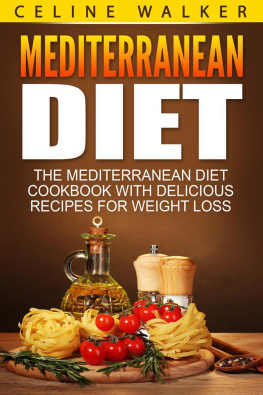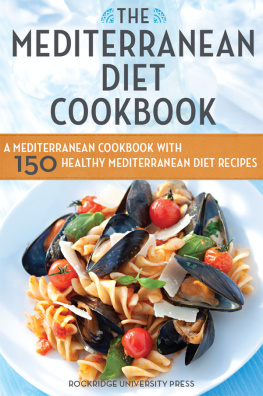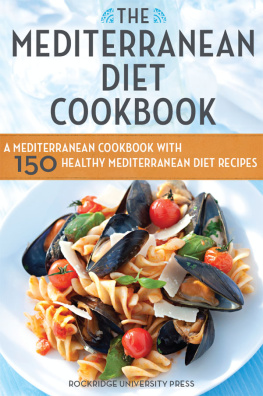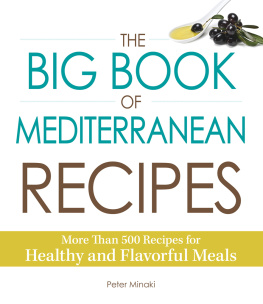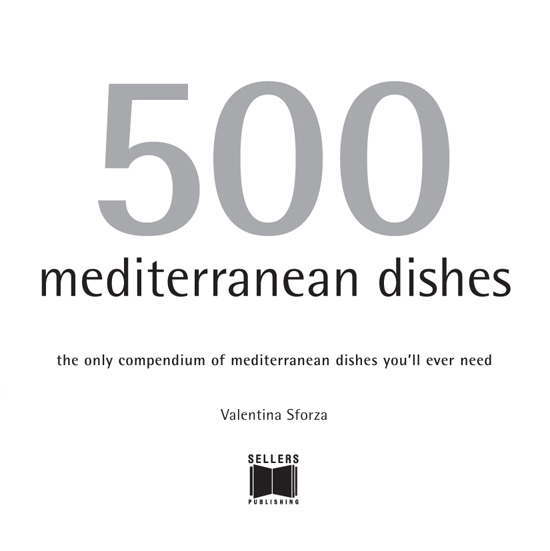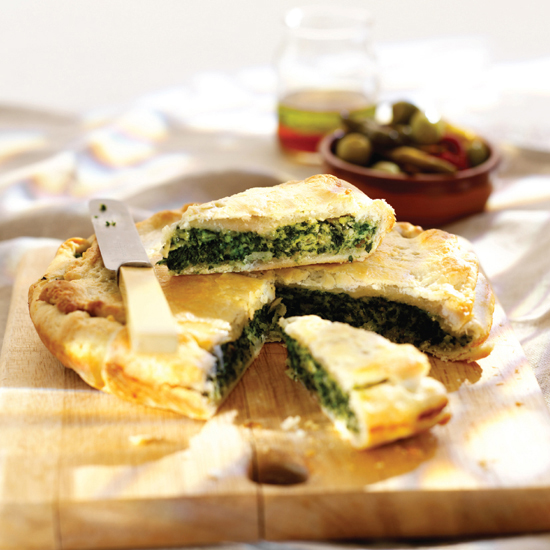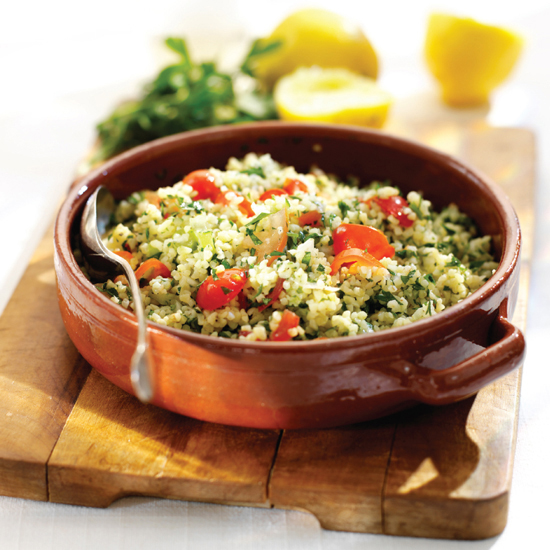contents

introduction
It is a well-known fact that the Mediterranean diet incorporates all the traditional healthy living habits of people from the countries bordering the Mediterranean Sea. It includes lots of vegetables, legumes, whole grains, breads, fruits, nuts, seeds, and olive oil, as well as plenty of fish, poultry, and small amounts of red meatand, in many countries, wine to drink with food. All food that falls under the general heading of Mediterranean is fresh, unprocessed, unrefined, and usually low in saturated and trans fats. The Mediterranean diet is considered to be one of the healthiest ways of eating, with statistics of heart disease and obesity generally recorded as being much lower in those countries where this sort of regime is followed, when compared to other more northern countries.
Recent news that eating a Mediterranean diet during pregnancy might ward off childhood allergies and asthma just adds to the list of studies suggesting this style of eating has a lot to offer. Living longer and having lower risks of heart disease, cancer, diabetes, and possibly birth defects have all been linked to eating a Mediterranean diet.
Of course, there is no one Mediterranean diet. There are twenty-one countries that border the Mediterranean Sea. Diets vary between these countries and also between regions within a country. Many differences in culture, ethnic background, religion, economy, and agricultural production result in different diets. But the common Mediterranean dietary pattern has these characteristics:
high consumption of fruits, vegetables, bread and other whole grains, potatoes, beans, nuts, and seeds
olive oil as an important monounsaturated fat source
dairy products, fish, and poultry consumed in low to moderate amounts, and little red meat
eggs consumed up to four times a week
wine consumed in low to moderate amounts
Mediterranean food is not just really good for you, it is also really delicious to eat and pretty to look at. It encompasses the culinary traditions and cultures of all the countries that border the Mediterranean waters. This is convivial food that suits the climate and the pace of life, consisting largely of lots of little dishes made out of tantalizing and delicious local specialtiesfrom grilled fish to delicate filled pastries, tasty stews, and fresh produce combined into salads. This is food that will enliven even the most jaded palate, where the key is always variety to satisfy even the hungriest diner.
This book contains many different recipes from all around the Mediterranean, recipes that are traditional and classical as well as new, innovative ideas, chosen because they taste delicious, are relatively simple to reproduce at home, and look simply wonderful on the tablegenerally bright and colorful, reminiscent of the warm and welcoming Mediterranean.
basic equipment
pots & pans
A big two-handled pot for making stock or for plenty of boiling water for al dente pasta is a must in Mediterranean cooking, as several dishes in this collection will be much easier to make successfully with a pot that is large enough to cope with big quantities of liquid. A solid-based casserole that is suitable for use both in the oven and on the stovetop is very useful for making stews and casserole dishes.
Mediterranean cooking also features a lot of grilling, so a good-sized cast-iron griddle pan will be useful. For shallow frying or sauting, a steel skillet and a good-quality nonstick skillet will be very useful. For deep-frying, if you dont own a deep-fat fryer, a deep pan made from metal that is not too heavy works equally well. A heavy steel pan is best kept for cooking at a lower temperature than that required for crisp and golden deep-fried foods. (If the oil is not hot enough, the food will simply soak up the oil and come out greasy.)
mixing bowls, colanders & sieves
A good collection of bowls in several sizes makes cooking much easier, as they can be used to combine ingredients or to hold ingredients while waiting to add them to a recipe. Steel bowls are best, as they are lighter and will not absorb strong flavors from ingredients such as garlic or onions, but glass, china, or plastic also work. When a recipe calls for several different ingredients, it is a good idea to measure them out into small ramekins or little bowls so that they can easily and efficiently be added to the dish.
For washing vegetables or for draining pasta and rice, a big colander, preferably made of metal, is always very useful. I also like to have two sieves, one with a very fine wire mesh for sifting dry ingredients and one with larger holes for straining liquids such as stocks or sauces.
measuring cups, spoons & scales
Many of the recipes in this book are quite easygoing about quantities, suggesting that you add a pinch of this or a handful of that. This is the nature of this style of cuisine. For the best results, however, and especially when making some of these recipes for the first time, it is wise to measure ingredients carefully. Even if you dont own a set of kitchen scales, it is always useful to have a set of measuring spoons for small quantities, a measuring cup for liquids, and a set of measuring cups for solids. Once you have perfected the recipes as they are written, you can adjust the quantities according to your personal preferences and taste.
knives & cutting boards
It is really important to have at least one good-quality, sharp kitchen knife for chopping and slicing. A small knife with a serrated blade is vital for cutting all ingredients that have a high citric acid content, such as tomatoes and all citrus fruit. Because you cant cut directly on your counter, cutting boards are absolutely essential, and because you must cut raw meat, fish, and poultry on a separate board from vegetables, fruit, cheese, and bread, two boards will be required. You will also need a pair of good-quality, sharp kitchen scissors, which will help you enormously to carry out a whole range of different jobs from gutting fish to snipping herbs.
other equipment
If you like, you can prepare couscous in a couscousire, which is like a double boiler with the water or stock in the bottom half and the couscous in the top half, the base of which is covered in small holes to allow the steam from the liquid to permeate the couscous. It has a tightly fitting lid to prevent the steam from leaking out. (Otherwise, couscous can be simply prepared by putting it into a bowl and covering it with hot water or stock, then covering with a lid to leave it to steam and absorb the liquid before fluffing it up with a fork.)
For pureing and blending, an electric stick blender or an immersion blender, is always very useful. A handheld electric whisk will save a lot of time when whipping cream or beating eggs.


